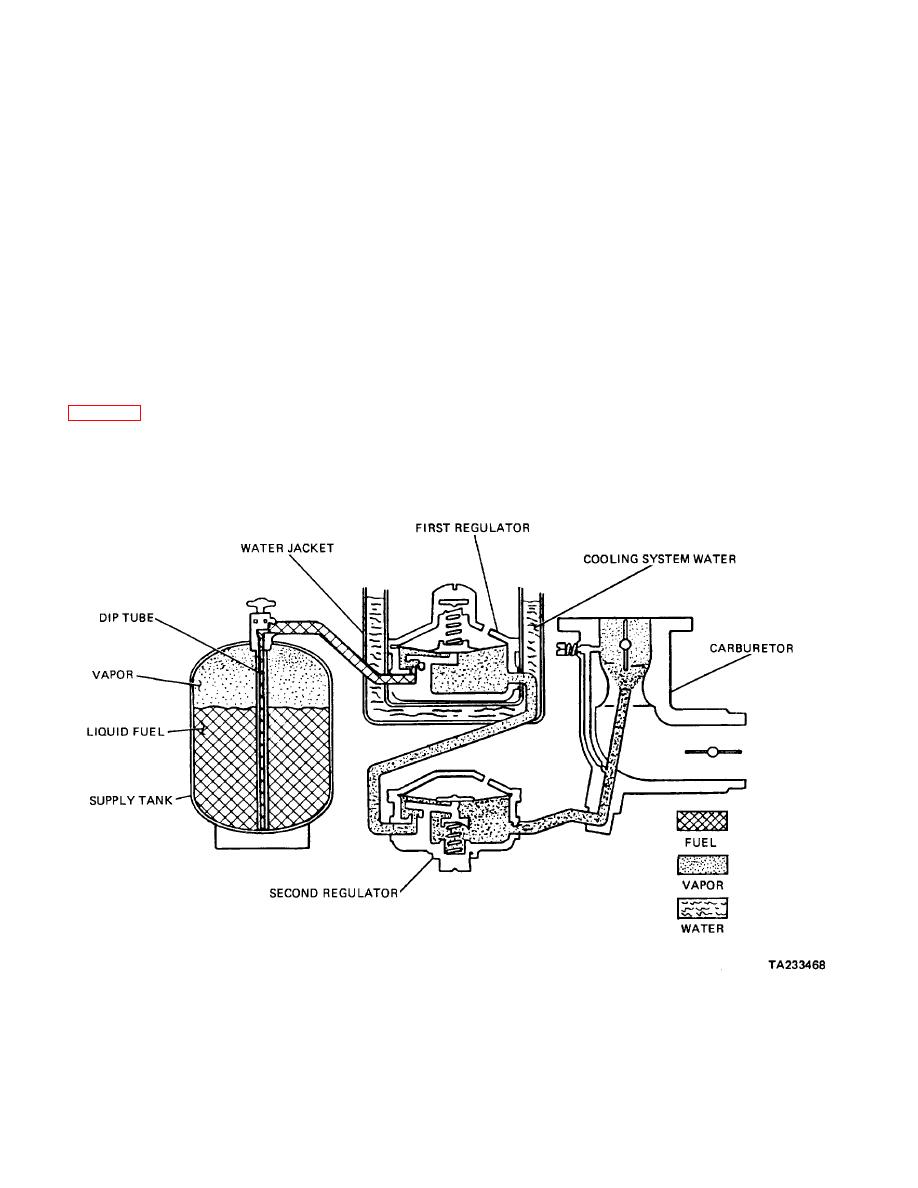
| Tweet |

Custom Search
|
|

|
||
 TM 9-8000
CHAPTER 6
PROPANE FUEL SYSTEMS
Section I.
CHARACTERISTICS
tanks also are filled between 80 and 90 percent of
6-1.
Liquefied Petroleum Gas. Liquefied petroleum
capacity to allow for thermal expansion.
These
gas, or LPG, is used for fuel on some vehicles. This
pressurized fuel tanks eliminate the need for a fuel
fuel remains a liquid under pressure and vaporizes when
pump. LPG burns at a slower rate than gasoline, which
it comes in contact with the atmosphere. LPG fuel is
results in smoother operation because of prolonged
stored in heavy steel tanks mounted on the vehicle. To
power impulses.
Being a gas, LPG minimizes
keep the mixture liquefied, these tanks are pressurized
crankcase dilution and prolongs engine life.
between 20 and 175 psi (137.9 and 1206.6 kPa). The
Section II. BASIC SYSTEM
103.42 kPa). The liquid fuel exits the regulator as half
6-2.
Operation. A typical LPG system is illustrated
vapor and half liquid. The vapor and liquid combination
in figure 6-1. In this system, liquid fuel exits the storage
then Is heated, causing it to become all vapor. The
tank by a tube mounted inside the supply tank. The
second regulator reduces the pressure of the gas to
tube is configured so that it is immersed in the liquid fuel
atmospheric pressure.
The gas then enters a
at all times. The fuel then is routed to the first regulator.
carburetor or mixing valve and then enters the cylinders.
This regulator reduces pressure to 4 to 15 psi (27.58 to
Figure 6-1. Liquefied Petroleum Gas System.
6-1/(6-2 blank)
|
||
 |
||